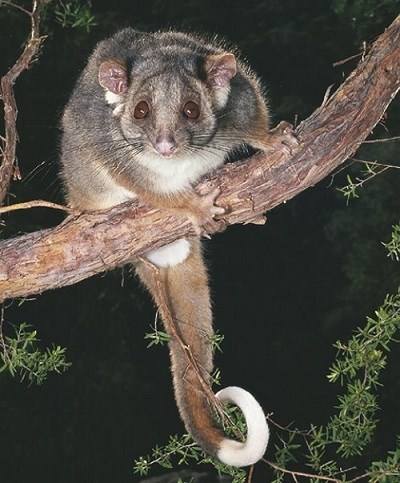Be it possums, snakes or even bats, we strive to make sure wildlife gets a chance to leave before demolition begins. In the event the wildlife doesn’t leave, we always contact the appropriate wildlife services so animals can be safely removed.
The Demolition Process Gives Animals A Chance
During the demolition process a house is taken apart in stages. First stripped of cladding and roof tiles before any heavy machinery is brought in. This helps to give any animals calling the house home time to flee to nearby shelter before the demolition begins in earnest.
Having said this. if you would like to check for, or rehouse, any possums or other animals living in the roof and other cavities, the first step is to identify whether that resident in your roof is a possum as opposed to other animals such as rats, mice, bats, birds or even snakes.
The Common Brush-tail Possum is the most populous possum species in Australia.
Generally found in woodlands and open forests, they most commonly make their homes in the hollow limbs of trees. However, due to urbanisation, these little creatures can often be found living in close quarters with humans.
They’re generally about the size of a cat, Common Brush-tail Possums have dense fur that varies in colour from light to dark grey on their backs, and a creamy colour on their undersides. The easiest way to identify Common Brush-tail Possums is by their black bushy tail and long ears.

Common Ringtail Possums are also a very common sight throughout Australia.
They’re generally around the size of a large rabbit, they are slightly smaller than the Brush-tail possum. Ringtail Possums are identifiable by their light grey and reddish-brown fur, along with their long, white-tipped tails which are used to hold onto things. When these possums aren’t clutching onto something with their tails, they often carry them in a curl shape that looks like a ring, hence the name.

Both Common Ringtail possums and Common Brush-tail possums are nocturnal and like to live in roof cavities due to a reduction in natural habitats. Possums are territorial creatures, so when thinking about demolishing your house it is a good idea to wait until the demolition is close to getting under way before removing your resident possum. Not only because the possum will try to return, but also because, even if he doesn’t, a new possum is likely to quickly move into the vacated territory.
It’s important to remember that relocating possums too far from their territory is illegal as the possums have a slim chance of survival. They need to be rehoused nearby, preferably in a tree or garden away from roofs.
Rats and mice are very common in urban areas and can easily be mistaken for possums unless observed.
The easiest way to do this is by accessing the roof space and looking for droppings, possum nests, and sleeping possums. As mentioned previously, possums are nocturnal so they tend be active at night.
They make heavy thumping noises as opposed to the softer pitter patter sound made by rats and mice. You can also listen for coughing and hissing noises that are somewhat unique to possums.
Another approach you can take is to sprinkle flour around the manhole opening. A possum’s footprints will be larger than that of rats or mice.
If you would like any more information or would like us to provide a free quote for a project, please get in touch.